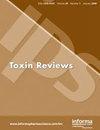Acrylamide in foods: from regulation and registered levels to chromatographic analysis, nutritional relevance, exposure, mitigation approaches, and health effects
IF 3.3
4区 医学
Q2 TOXICOLOGY
引用次数: 4
Abstract
Abstract Herein we explore the latest research on a chemical compound resulting from food processing and during the Maillard reaction: Acrylamide (ACR). ACR is formed during high-temperature cooking processes (i.e. >120 °C), such as frying, roasting, and baking. Considering the relevance of ACR in the food industry, first, we briefly explored the nature of ACR and its mechanisms of formation and current available legislative framework (with especial emphasis on baked goods and cereals, potato-based products, and coffee). Special attention was given to which foods are more likely to contain considerable amounts of ACR and the particulars of chromatographic methodologies involved in its testing (including extraction). Additionally, health effects caused by ACR were addressed that include an introduction to eukaryotic and prokaryotic ACR metabolism, biotransformation, and fate. Risk assessment, including a margin of exposure (MOE) and tolerance levels for ACR, was highlighted. Finally, we concluded our review with a section regarding methods and strategies available to reduce ACR in foods; this includes the role of asparagine (Asn), operation units available to industry, and the addition of natural products. ACR is still a relevant compound regarding food safety, and still, research is ongoing to develop methods for accurate surveillance and strategies for quenching its formation at the processing stage.食品中的丙烯酰胺:从法规和注册水平到色谱分析、营养相关性、暴露、缓解方法和健康影响
摘要本文探讨了食品加工和美拉德反应过程中产生的一种化合物:丙烯酰胺(ACR)的最新研究。ACR是在高温烹饪过程中形成的(即>120 °C),如油炸、烘焙和烘焙。考虑到ACR在食品行业的相关性,首先,我们简要探讨了ACR的性质及其形成机制和当前可用的立法框架(特别强调烘焙食品和谷物、土豆制品和咖啡)。特别注意哪些食品更有可能含有大量的ACR,以及其测试(包括提取)中涉及的色谱方法的细节。此外,还讨论了ACR对健康的影响,包括引入真核和原核ACR代谢、生物转化和命运。强调了风险评估,包括暴露边际(MOE)和ACR的耐受水平。最后,我们总结了我们的综述,其中有一节是关于减少食品中ACR的方法和策略;这包括天冬酰胺(Asn)的作用、可用于工业的操作单元以及天然产物的添加。ACR仍然是一种与食品安全相关的化合物,目前仍在研究开发准确监测方法和在加工阶段抑制其形成的策略。
本文章由计算机程序翻译,如有差异,请以英文原文为准。
求助全文
约1分钟内获得全文
求助全文
来源期刊

Toxin Reviews
医学-毒理学
CiteScore
6.80
自引率
0.00%
发文量
36
审稿时长
>12 weeks
期刊介绍:
Toxin Reviews provides an international forum for publishing state-of-the-art reviews and guest-edited single topic special issues covering the multidisciplinary research in the area of toxins derived from animals, plants and microorganisms. Our aim is to publish reviews that are of broad interest and importance to the toxinology as well as other life science communities. Toxin Reviews aims to encourage scientists to highlight the contribution of toxins as research tools in deciphering molecular and cellular mechanisms, and as prototypes of therapeutic agents. Reviews should emphasize the role of toxins in enhancing our fundamental understanding of life sciences, protein chemistry, structural biology, pharmacology, clinical toxinology and evolution. Prominence will be given to reviews that propose new ideas or approaches and further the knowledge of toxinology.
 求助内容:
求助内容: 应助结果提醒方式:
应助结果提醒方式:


